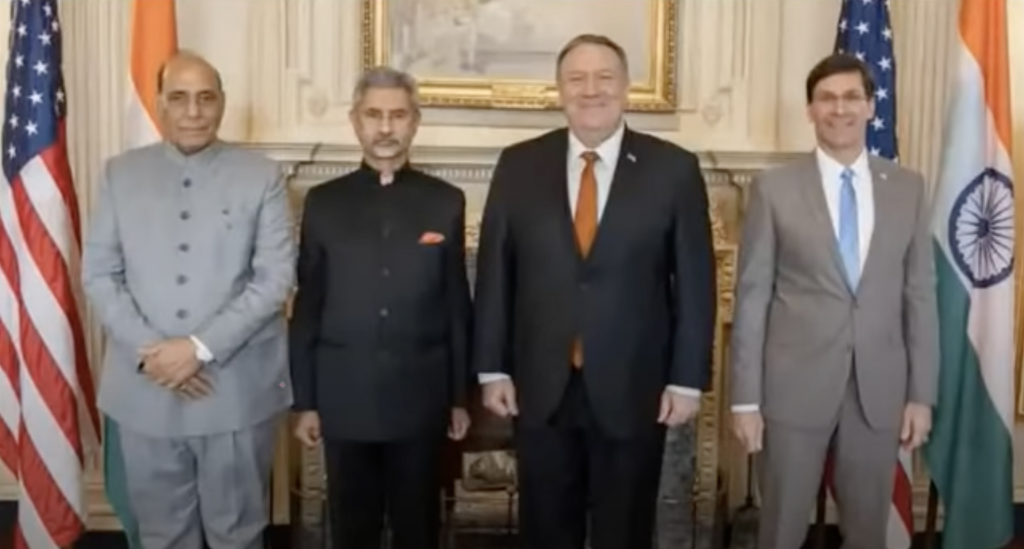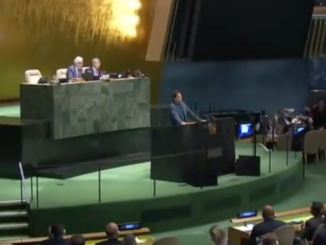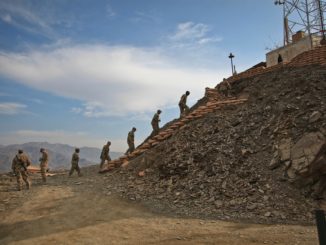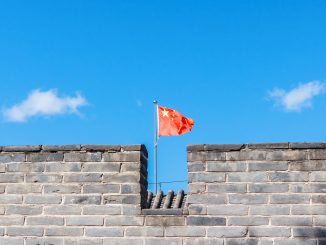
The signing of the Basic Exchange Cooperation Agreement (BECA) between India and the USA has cemented the former’s position as a principal strategic partner of the later in the Indo-Pacific and into the bargain is India’s long-sought hyphenation with China, which necessitates the elevation of India’s status as a “counterweight” to China in the Asia-pacific. Nevertheless, with greater status comes greater obligations and greater obligations are not devoid of greater perils.
The immediate reverberation of India’s tilt towards Washington is an infuriated dragon next door with whom it shares an un-demarcated border alongside the overlapping territorial claims spreading over thousands of square kilometers. If the recent Indo-China border clash in the Himalayas introduced clarity in New Delhi on China, the subsequent signaling by New Delhi, most notably the signing of BECA, also removed any ambiguities on part of Beijing that India is a willing member of the US-led club to contain China and ought to be dealt as an adversary. Given the level of distrust between the two sides and in the wake of the sanguinary Galwan valley clash, neither side can afford to leave their forward positions in Laddakh, as it will provide the other side with the opportunity to step forward and occupy the contested land. Recognizing that, India now has the second active border where its forces are eyeball to eyeball with the adversary – first being all year round active border with Pakistan – and until there is a breakthrough in the negotiations – which seems remote – the stalemate is expected to prolong.
Given the stark military imbalance between the two sides and lack of political will in New Delhi to confront dragon head-on, the chances of a full-fledged military confrontation in the inhospitable Himalayas remain extremely slim. Despite that, the prevalent status quo – which entails stationing thousands of troops in extremely harsh conditions in an eyeball-to-eyeball engagement against an adversary in command of an economy almost five times and a military budget almost four times greater than that of India’s – constitutes an unpalatable scenario for New Delhi. As the things stand, almost 60% of India’s defense allocation is spent on just maintaining the country’s 1.3 million-strong Army; once this maintenance cost in the absence of a major budgetary hike is added to by the demanding round the year deployment at high altitude expenditures, the long due modernization and expansion of Indian military are likely to be imperiled. Indian Navy would particularly suffer: an even smaller share from the budgetary pie will impinge upon its much-needed capacity building to execute the USA’s entrusted role of ‘net security provider’ in the Indian Ocean Region.
Interestingly, unlike the other members of the Quad, the USA is not bound by any treaty agreement to rush to India’s help if the latter is tested by China in the Himalayas. Washington, however, is likely to be inclined towards raising India’s threat perception vis-a-vis China, which would expedite widening the wedge between the two Asian giants besides stimulating burgeon Washington’s arms merchandise with India. The Western military technology would unquestionably bolster India’s military strength, but it remains a question mark whether India’s military might – without a major budgetary hike – would be robust enough to keep the dragon at bay in the Himalayas and check its presence in the IOR.
The second byproduct of Indo-US entente is India’s growing isolation within its region, which can be attributed to China’s involvement in South Asia under the compelling pretext of geo-economics, and India’s decades-long bullish and coercive attitude towards its smaller neighbors. Thanks to the irrational hubris in New Delhi, at this moment, Bhutan is the only country in South Asia with whom China has not established a multi-dimensional relationship at the cost of India’s regional influence.
Ironically, the Indian Foreign Minister during one of his addresses asserted that “regionalism is key” to India’s rise, and according to him, “connectivity is central to this endeavor”. Nevertheless, the discourse seems to be yet another manifestation of India’s paradox-ridden foreign policy: it acknowledges and appreciates the significance of regionalism and connectivity for economic prosperity in a region but is itself the biggest obstacle in the path to regional integration within South Asia.
Granted, except for Pakistan, the relations between India and its South Asia neighbors are unlikely to deteriorate to the level of being hostile and the recent “vaccine diplomacy” is also a healthy sign for India’s soft image. However, the deepening economic relations between China and India’s South Asian neighbors, and dragon’s mounting geopolitical influence in the IOR and continental South Asia is a bad premonition for India’s power projection in its immediate neighborhood and the USA’s stratagem to contain and retrench China in this crucial geographical zone.
The Indo-US strategic partnership is also reflecting poorly on India’s “special and privileged” partnership with Russia, which is also a supplier of almost 60% of India’s defense hardware. During the fateful year 2020, it has been twice, first in January and then in December, that Moscow has openly expressed its reservations over India’s growing proximity with the USA, especially India becoming an important player in the USA’s Indo-Pacific Strategy and Quad, which Moscow views as stratagems to contain China. Nonetheless, in an attempt not to infuriate New Delhi, the Russian Foreign Minister avoided directly criticizing India; instead, he shrewdly blamed the “Western countries” for trying to “engage” India in “anti-China games” thereby exonerating Moscow’s strategic partner of the connivance.
Nonetheless, even the nuance was not received well in New Delhi: Indian academics termed Moscow’s allusions as a desecration of India’s ‘Strategic Autonomy’ and the Indian External Affairs Ministry asserted that India’s relations with each country are independent of its relations with third countries besides communicating that India’s partners and allies ought to understand and appreciate New Delhi’s stance. Apart from the unusual snub that Moscow received from New Delhi, the annual summit between the leadership of two countries was canceled for the first time in two decades, which was blamed on the ongoing plague, despite the opportunity to organize it as a virtual event.
The subtle strain in India- Russia relations does not entail an instant or imminent decoupling. In fact, despite cautioning by the USA that it would trigger Countering American Adversaries Through Sanctions Act (CAATSA) if India consummates the S-400 deal with Russia, New Delhi has decided to send its officers and airmen to receive the required training in Russia. As the things stand, the fate of the S-400 deal and conceivable US response has emerged as major deciding factors for India’s geostrategic orientation for the time to come.
Until now, Moscow and New Delhi have been very tactful in leveraging the grey areas in foreign policy to keep their partnership impervious from their relations with third countries; however, amid the ongoing realignments in the global power structure, it would be increasingly difficult for India and Russia to continue optimizing the grey areas while making the geostrategic choices. If Moscow is aggrieved at India’s unprecedented tilt towards Washington, India also has its reservations over Russia trying to mend fences with India’s arch-rival Pakistan and the Sino-Russia strategic partnership, which – owing to Moscow’s antagonism towards the West and the USA’s geostrategic competition with China – has strengthened and expanded enormously during past few years.
![]()




Be the first to comment